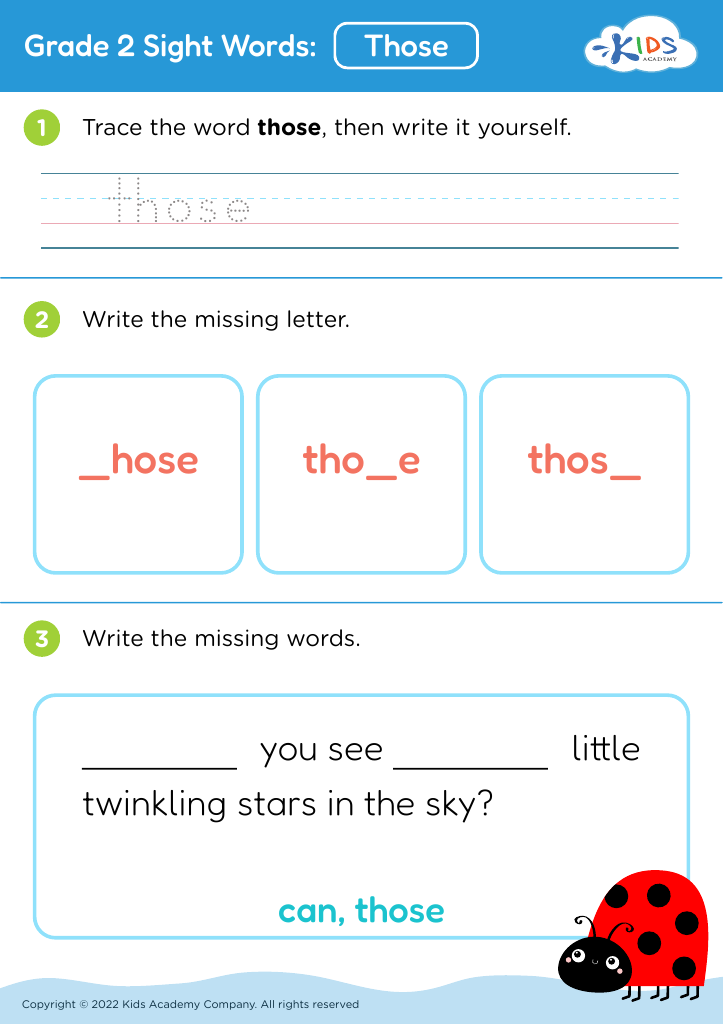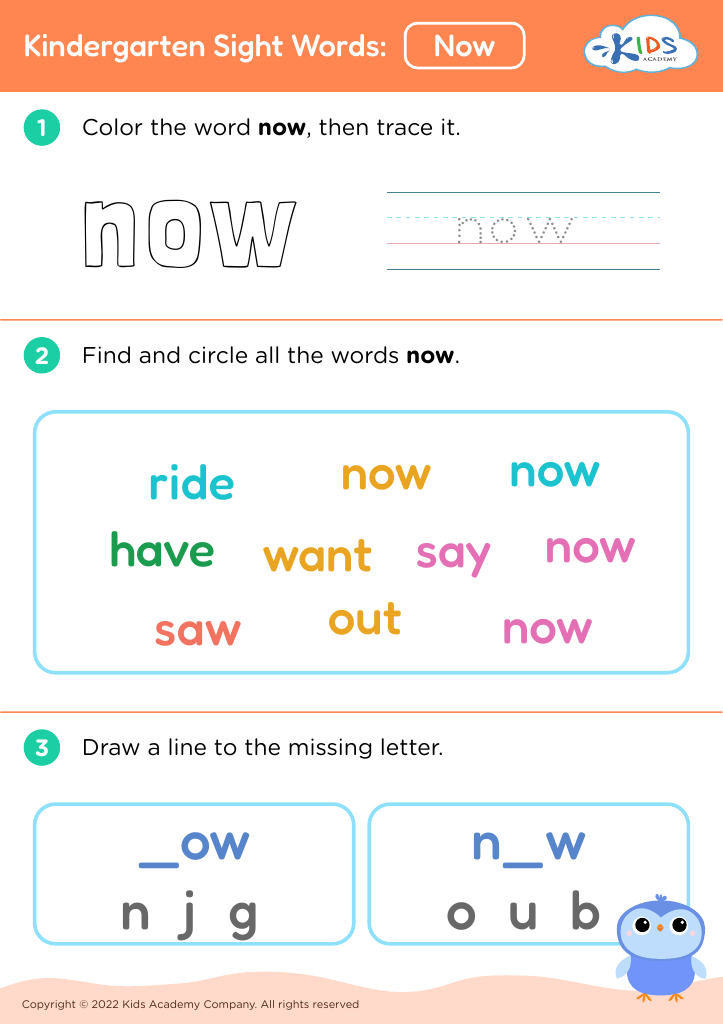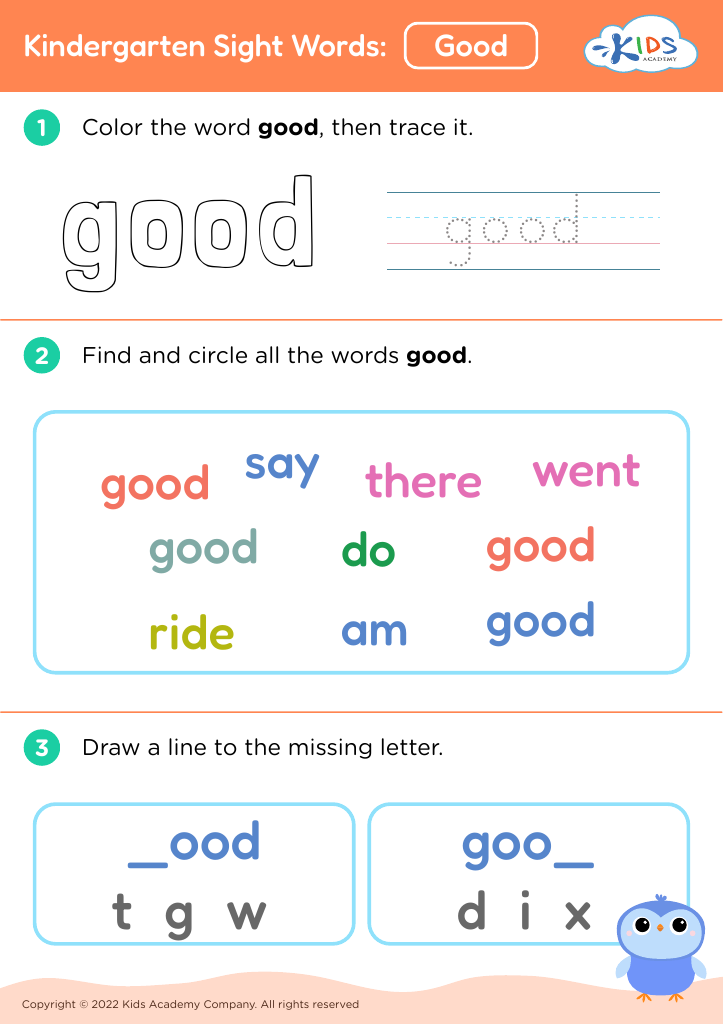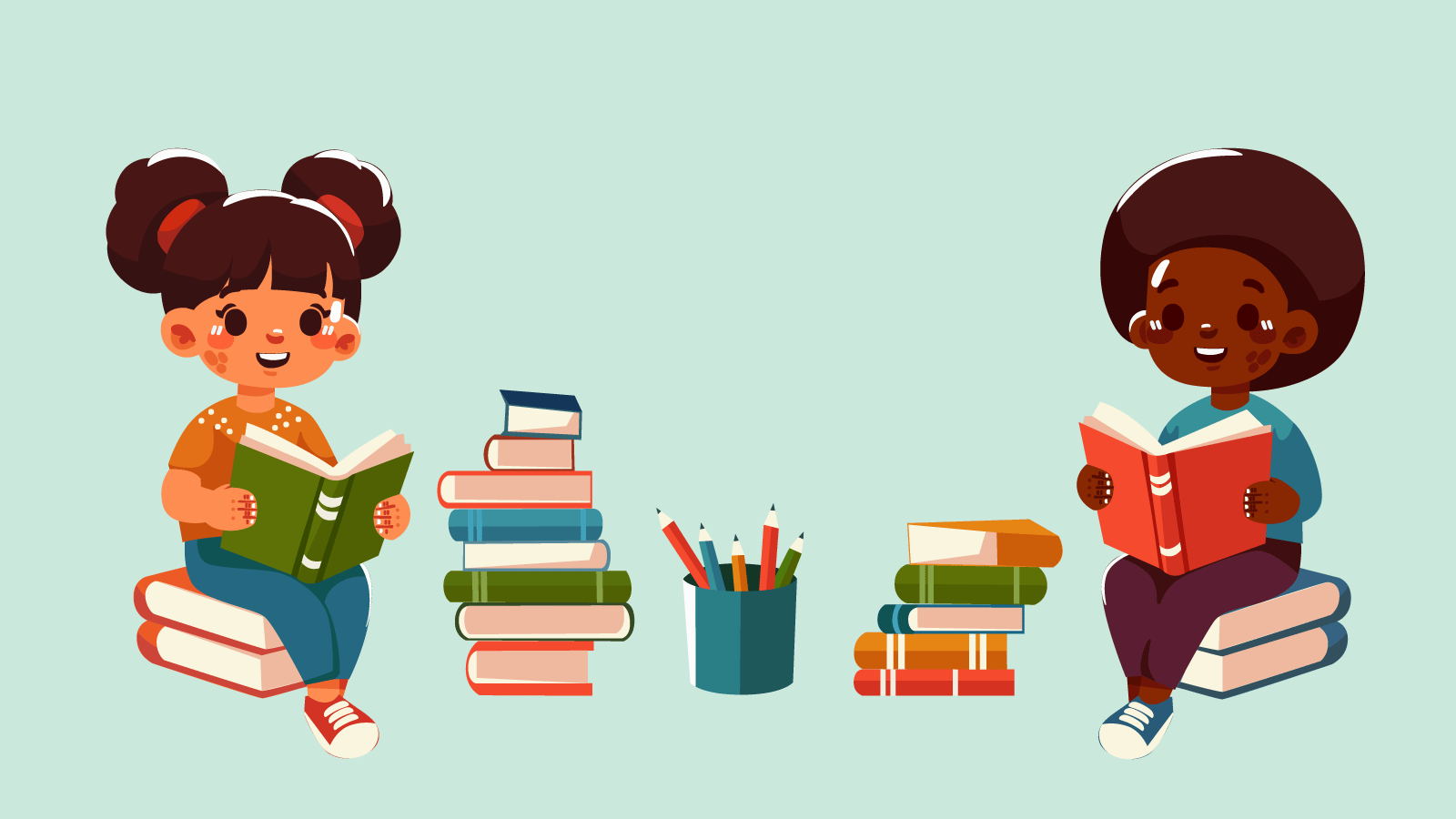Color Identification Reading Worksheets for Ages 5-9
12 filtered results
-
From - To
Explore our engaging Color Identification Reading Worksheets designed for children ages 5 to 9! These educational resources provide an interactive and fun way for young learners to enhance their reading skills while mastering color recognition. Each worksheet features vibrant illustrations and age-appropriate language to captivate children’s attention and spark their imagination. Ideal for home or classroom use, our worksheets encourage creativity and help develop essential reading comprehension abilities. Perfect for boosting vocabulary, promoting visual coordination, and fostering a love for learning, these activities are a fantastic addition to your educational toolkit. Discover the joy of learning colors today!
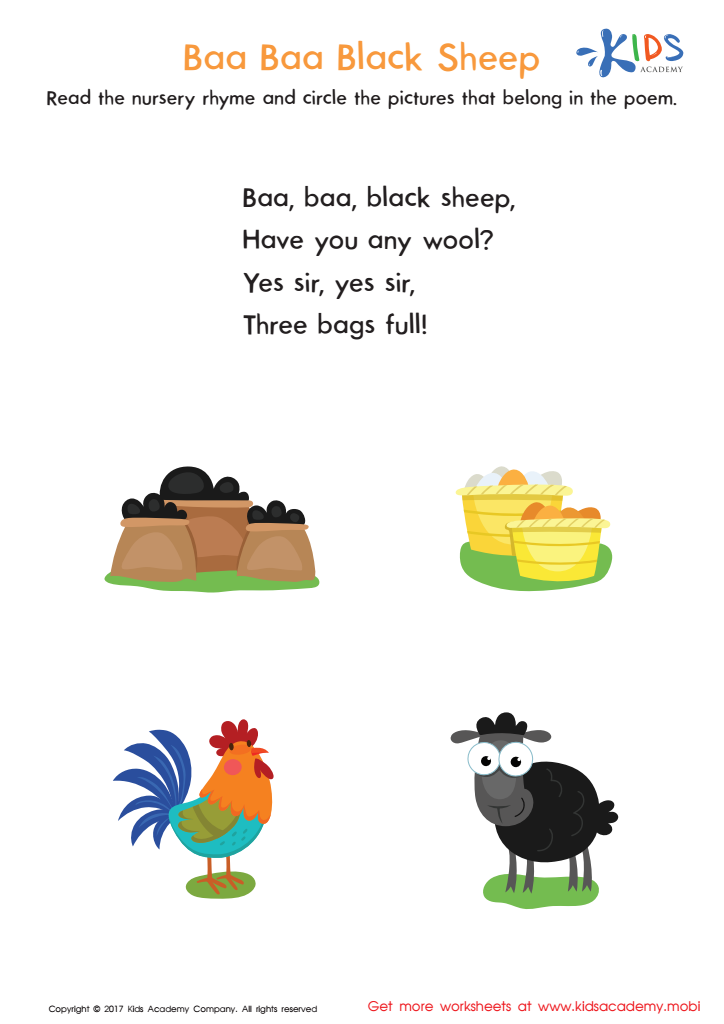

Baa Baa Black Sheep Printable


Fish Worksheet
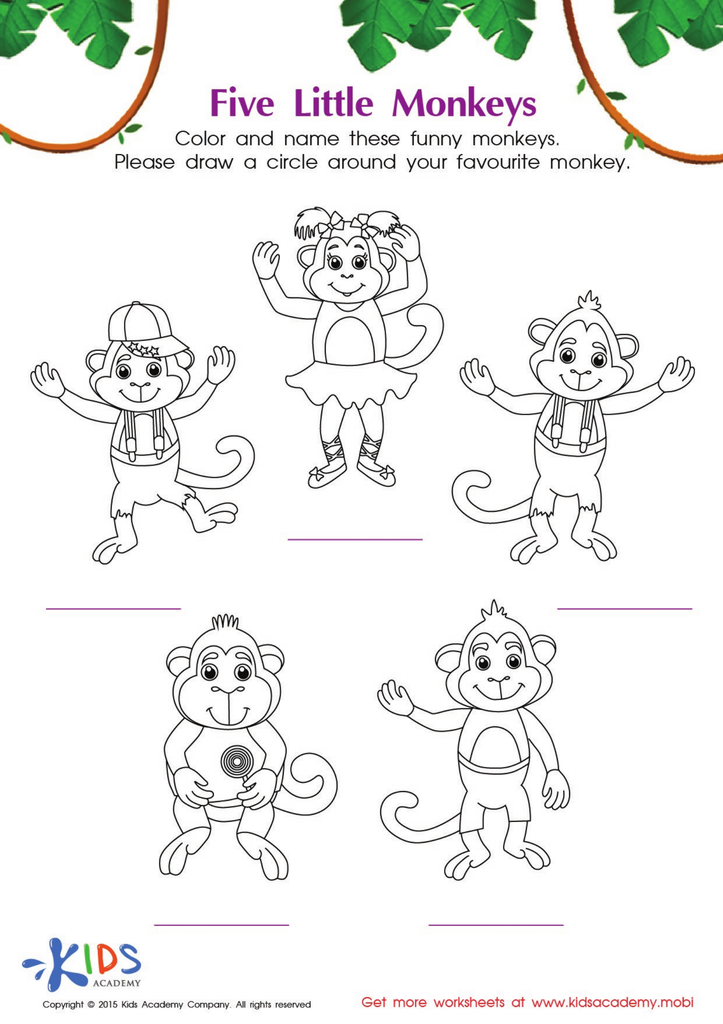

The Five Little Monkeys Coloring Worksheet
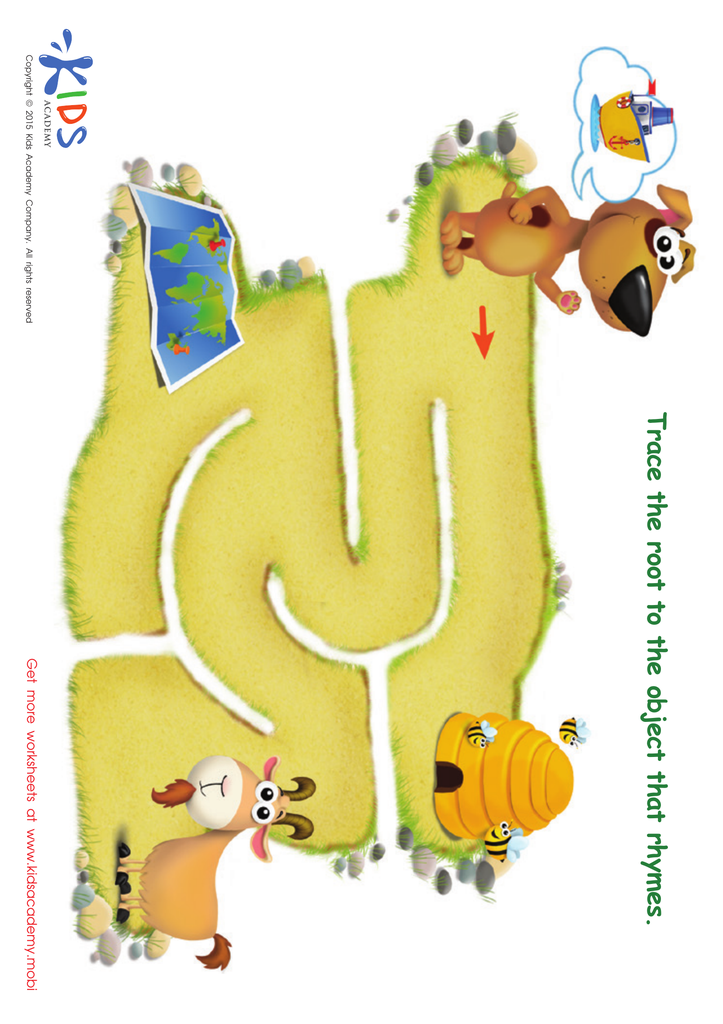

Boat Rhyming Words Worksheet


First Words: Color Recognition Worksheet
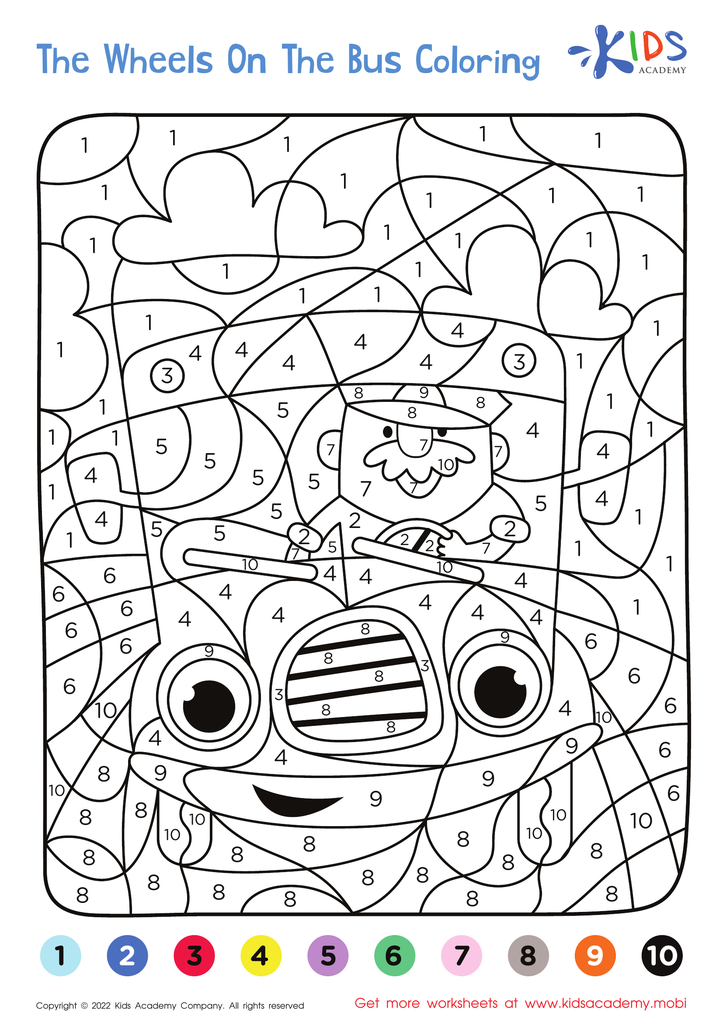

Wheels on the Bus – Coloring by Numbers
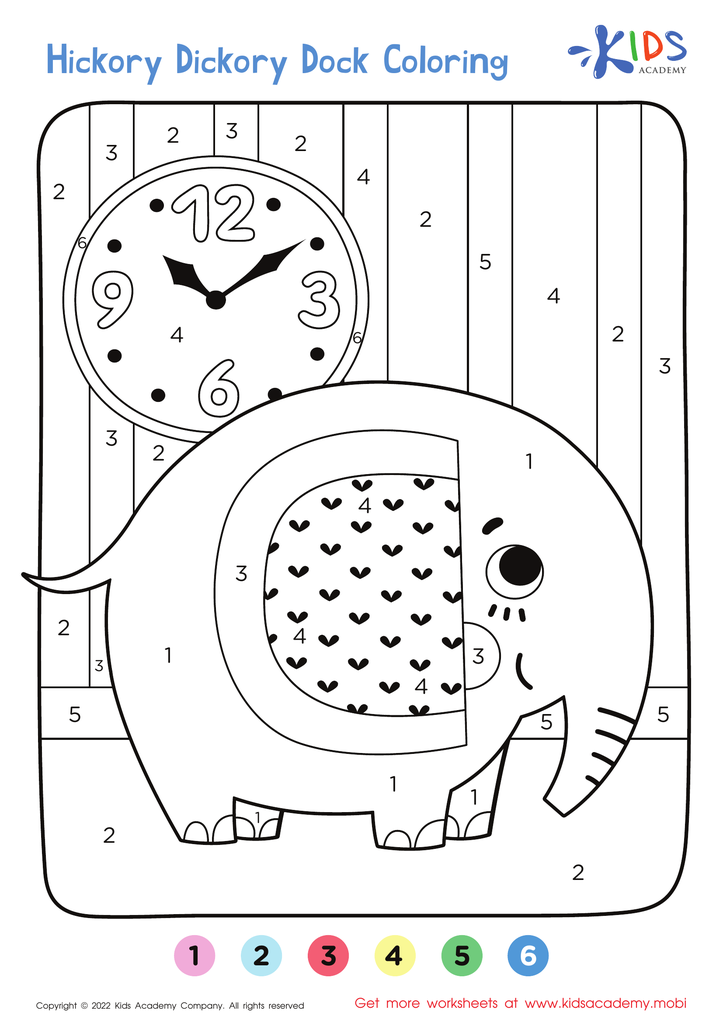

Hickory Dickory Dock – Coloring by Numbers
Color identification is a foundational skill for children aged 5-9, and it holds significant importance in their overall development. For parents and teachers, nurturing this skill or reading activity can enhance young learners’ understanding of the world around them. Firstly, color identification is linked to cognitive development, as recognizing and naming colors helps improve language skills and vocabulary. Young children learn to articulate their thoughts and engage in conversations, which are crucial communication skills.
Additionally, colors have a strong psychological impact on emotions and moods, so helping children identify colors can support emotional intelligence. Recognizing colors helps children make connections in various subjects, such as art, science, and even math, where colors are often used to categorize and represent information.
Moreover, engaging in color identification activities provides opportunities for interactive learning, fostering creativity and sensory exploration. Games, books, and hands-on activities make learning stimulating and fun, sustaining children's interest.
For parents and teachers, investing time in color identification reading and activities can ultimately lay a robust foundation in early literacy and learning. This skill encourages curiosity, builds confidence, and paves the way for future educational successes, making it an essential focus in early childhood education.

 Assign to My Students
Assign to My Students

